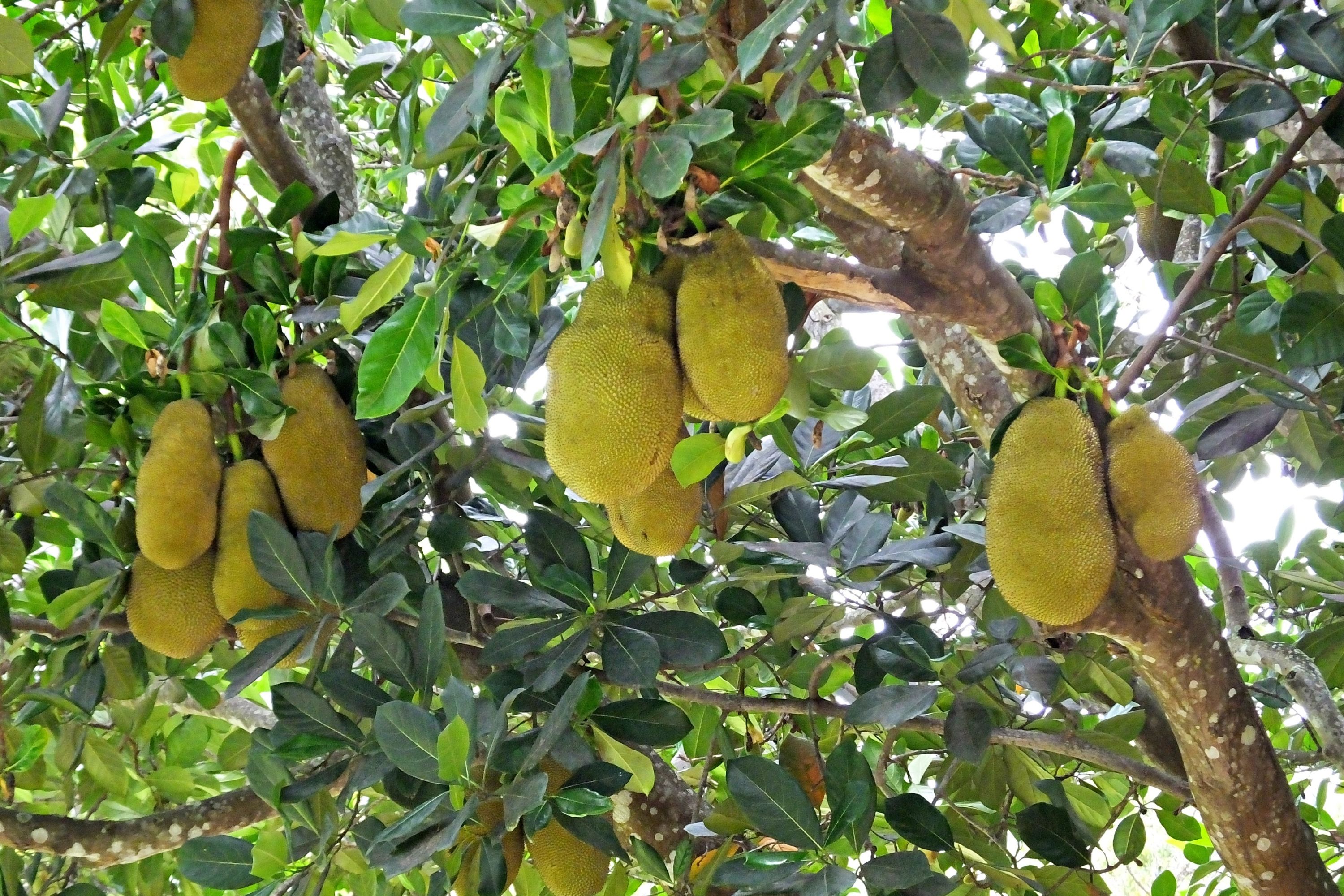Jackfruit
(Artocarpus heterophyllus)

Description
The jackfruit (Artocarpus heterophyllus), also known as jack tree, is a species of tree in the fig, mulberry, and breadfruit family (Moraceae). Its origin is in the region between the Western Ghats of southern India, all of Sri Lanka and the rainforests of Malaysia, Indonesia and the Philippines. The word jackfruit comes from Portuguese jaca, which in turn is derived from the Malayalam language term chakka (Malayalam: chakka pazham), when the Portuguese arrived in India at Kozhikode (Calicut) on the Malabar Coast (Kerala) in 1499. Later the Malayalam name cakka) was recorded by Hendrik van Rheede (1678–1703) in the Hortus Malabaricus, vol. iii in Latin. Henry Yule translated the book in Jordanus Catalani's (fl. 1321–1330) Mirabilia descripta: the wonders of the East. This term is in turn derived from the Proto-Dravidian root kā(y) ("fruit, vegetable"). The common English name "jackfruit" was used by physician and naturalist Garcia de Orta in his 1563 book Colóquios dos simples e drogas da India. Centuries later, botanist Ralph Randles Stewart suggested it was named after William Jack (1795–1822), a Scottish botanist who worked for the East India Company in Bengal, Sumatra, and Malaya. The jackfruit was domesticated independently in South Asia and Southeast Asia, as indicated by the Southeast Asian names which are not derived from the Sanskrit roots. It was probably first domesticated by Austronesians in Java or the Malay Peninsula. The fruit was later introduced to Guam via Filipino settlers when both were part of the Spanish Empire. It is the national fruit of Bangladesh.
Taxonomic tree:







